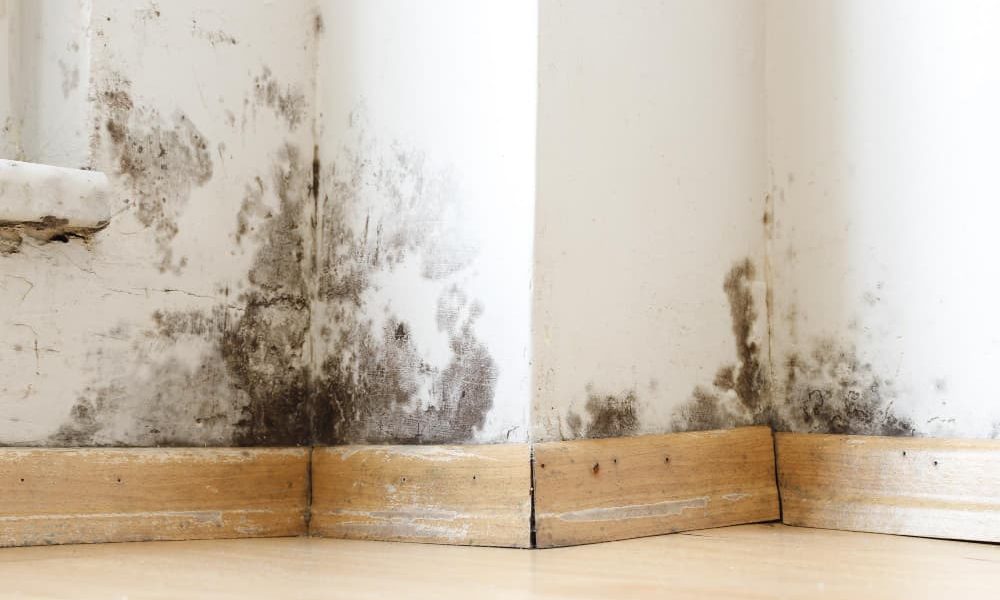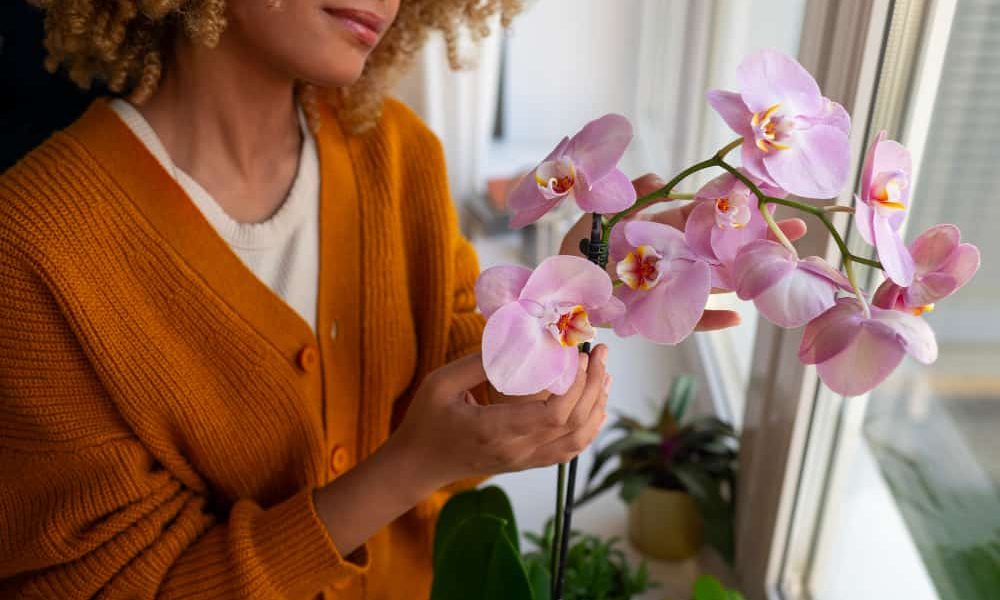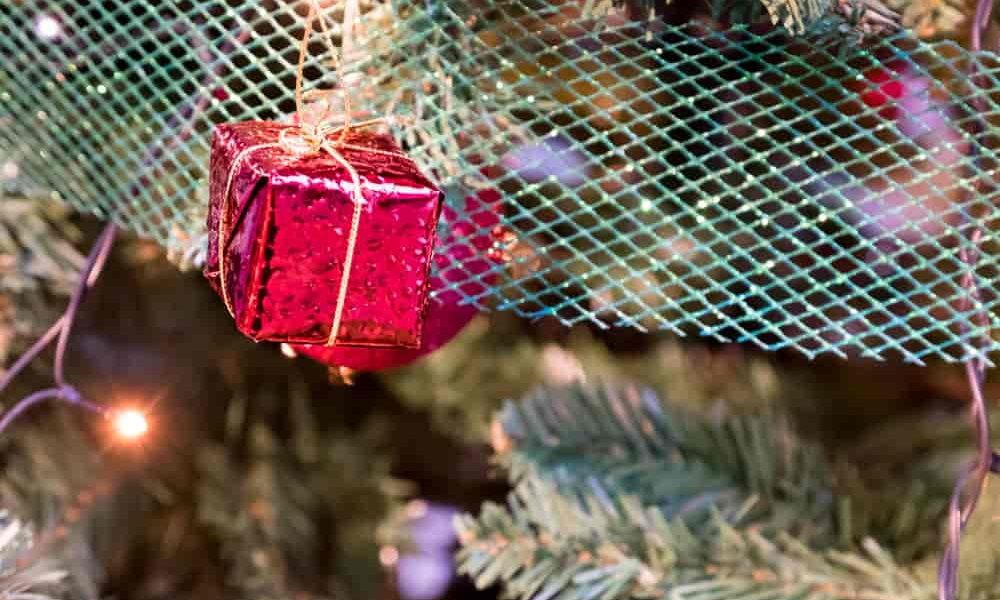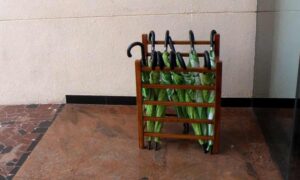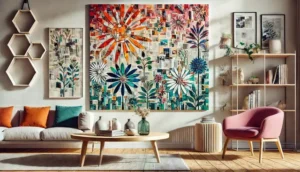In today’s world, where sustainability and eco-conscious living are becoming more important, finding creative ways to repurpose everyday items is a rewarding and meaningful endeavor. One often-overlooked item that can be transformed into unique and functional home decor is the humble old book. Rather than letting old, damaged, or forgotten books collect dust on a shelf or end up in a landfill, upcycling them into decorative pieces offers a perfect blend of creativity, environmental responsibility, and personal expression.
One particularly charming and practical way to repurpose old books is by turning them into planters. A book planter allows you to combine the beauty of literature with the natural appeal of greenery, creating a striking conversation piece that brings a touch of nature indoors. Not only does this project give new life to books that might otherwise be discarded, but it also serves as an eco-friendly alternative to buying new planters.
In this article, we’ll explore how to upcycle old books into stunning book planters, offering step-by-step guidance, plant selection tips, and creative ways to incorporate these planters into your home decor. Whether you’re a seasoned DIY enthusiast or a novice looking for a fun project, this guide will inspire you to turn your old books into beautiful, functional decor that enhances your living space while contributing to a more sustainable lifestyle.
Why Upcycle Old Books?
In an age where sustainability is at the forefront of design and lifestyle choices, finding creative ways to reduce waste has become more important than ever. Upcycling old books into home decor not only adds a personal touch to your living space but also serves as an eco-friendly alternative to disposing of materials that might otherwise end up in a landfill. With millions of books being discarded annually, upcycling offers a meaningful way to give these books a new life while simultaneously transforming your home into a unique, literary-inspired haven. But why exactly should you upcycle old books, and what makes it a better option than simply recycling or donating them?
Firstly, let’s clarify the difference between recycling and upcycling. Recycling involves breaking down materials into their raw components and using them to create new products. While beneficial, recycling often requires a large amount of energy and can sometimes degrade the quality of the material over time. In contrast, upcycling maintains the integrity of the original product but reimagines its function and purpose. Upcycling old books, for example, turns an item that might no longer serve its original function into something completely different—like a planter, a piece of art, or a storage box—without going through the energy-intensive recycling process.
One of the primary reasons to upcycle old books is environmental sustainability. Landfills are overflowing with items that could be repurposed, and books are no exception. When paper decomposes in landfills, it releases methane, a greenhouse gas far more potent than carbon dioxide. By upcycling, you are directly reducing the number of books that contribute to landfill waste, thereby helping to mitigate environmental damage.
Moreover, upcycling promotes creativity and resourcefulness. Each upcycled project is a chance to think outside the box (or, in this case, outside the book). You are transforming something that might be deemed useless into a functional or decorative item that enhances your home. This act of creation is both personally fulfilling and inspiring. Whether it’s turning a novel into a book planter or using pages as wallpaper, the process allows for endless customization, ensuring that no two projects are ever the same.
For many, upcycling books also holds sentimental value. Perhaps you have an old book that has seen better days, but you can’t bear to part with it due to its history or meaning. Upcycling allows you to preserve those memories while giving the book a new form and function. For example, turning a beloved, worn-out novel into a planter that can hold your favorite succulents not only saves the book from the recycling bin but also keeps it close to your heart.
Lastly, upcycling can be a budget-friendly alternative to purchasing new home decor items. Repurposing materials you already have saves money and gives you a sense of satisfaction from creating something with your hands. Books that might cost pennies at a yard sale or thrift store can be transformed into high-value decorative pieces, lending a vintage charm to your living space without breaking the bank.
Tools and Materials Needed for a Book Planter Project
So, you’re inspired to turn those dusty old books into a charming planter that will add a green touch to your home decor—what’s next? To bring your vision to life, you’ll need a few simple tools and materials. Luckily, most of these items are easily accessible, and you may already have them on hand. Let’s break down the essentials for your DIY book planter project.
Books: The star of the show! Choose a hardcover book that is large enough to accommodate a plant. A sturdy cover will ensure that your planter holds up over time. Old encyclopedias, hardback novels, or textbooks work best for this kind of project, especially if you want to create a planter that can stand on its own as a statement piece. Consider the thickness and size of the book—thicker books will allow for deeper planting space, while larger books will provide a more dramatic effect.
Cutting Tools: A utility knife or box cutter will be your best friend for this project. You’ll use it to hollow out the book’s pages, so make sure the blade is sharp. For safety, always cut slowly and carefully, especially if you are cutting through multiple pages at a time. A ruler can also help guide your cuts, ensuring straight lines as you create the planting hole.
Glue: You’ll need a strong adhesive like Mod Podge or PVA glue to secure the pages together. This ensures that the book holds its shape after you cut into it. Applying glue to the outer edges of the pages will create a solid block that forms the planter’s walls, preventing them from crumbling or becoming flimsy.
Plastic Liner: Since paper and water don’t mix well, a plastic liner is essential for protecting the book from moisture damage. You can use a small plastic bag, or repurpose an old piece of plastic packaging, to create a waterproof barrier between the soil and the book. If you don’t plan on directly planting inside the book, a small plastic plant pot that fits snugly into the cut-out section will work just as well.
Soil and Plants: Choose a soil mix that matches the type of plant you intend to grow. Succulents, for example, require well-draining soil, while other plants may need more moisture-retentive soil. As for the plants themselves, succulents, air plants, or small cacti are ideal choices for book planters because they don’t require frequent watering and are relatively low-maintenance. Be sure to choose plants that won’t outgrow the confines of your book.
Optional Extras: For added flair, consider using decorative materials such as moss, pebbles, or colored stones to dress up your planter. These can be placed around the base of the plant to cover the soil and give the project a polished look. If you want to further personalize your planter, you can paint the book cover or add other embellishments.
With these tools and materials, you’ll be ready to create a stunning book planter that will bring a touch of nature and creativity to any space. Whether you’re a seasoned crafter or just getting started, the simplicity of this project makes it accessible to all skill levels. Plus, the satisfaction of upcycling something old into something new is an added bonus you’ll enjoy for years to come.
Step-by-Step Guide to Making a Book Planter
Now that you have all your materials ready, it’s time to dive into the fun part—creating your book planter. This step-by-step guide will walk you through the process to ensure your DIY project turns out beautifully. Whether you’re a beginner or an experienced crafter, this guide is designed to be easy to follow.
Step 1: Prepare the Book
- Start by choosing a sturdy, hardcover book. It’s essential to pick a book that’s large enough to hold soil and a small plant.
- Lay the book flat on a hard surface, with the front cover open. Using your utility knife or box cutter, carefully begin cutting a rectangle on the first page. The size of the rectangle will depend on how large you want your planter to be. For smaller plants like succulents, a 3×5 inch rectangle is usually sufficient.
- Once you’ve cut through the first page, continue cutting down through multiple pages, about 1-1.5 inches deep. This hollowed-out space will be the planter. Be patient, and make sure your cuts are clean and straight.
- After you’ve reached the desired depth, apply glue to the outer edges of the pages. This will help secure the book and ensure that the pages don’t fall apart over time. Clamp the book together (or weigh it down) and let it dry for a few hours.
Step 2: Line the Book Planter
- Once the glue has dried, you’ll need to protect the book from moisture. Line the inside of the hollowed-out section with plastic to prevent water from damaging the pages. A small plastic bag works well—just cut it to size and secure it inside with glue or double-sided tape.
- Ensure that the plastic liner fits snugly into the cut-out space, covering all sides to protect the book from water and soil.
Step 3: Add Soil and Plant
- After the plastic lining is in place, it’s time to fill your planter with soil. Choose soil that suits the plant you’re using. For succulents and cacti, opt for well-draining soil, and for other plants, use potting soil that retains moisture.
- Gently place your plant into the soil, pressing down lightly to secure it in place. Be careful not to overfill the space with soil, as you don’t want it spilling over the edges of the book.
- Once the plant is in, give it a light misting of water. If you’re using a plant that requires very little water, be cautious to avoid overwatering.
Step 4: Final Touches
- If you’d like, you can add decorative elements like small rocks, pebbles, or moss to the top of the soil for an added touch of charm.
- Close the book’s cover to give the appearance of a real book with a hidden garden inside, or leave the cover open as a visual statement piece. Your book planter is now ready to be displayed!
Choosing the Right Plants for Your Book Planter
When it comes to selecting the perfect plants for your book planter, you’ll want to think small and low-maintenance. Since a book planter offers a limited amount of space and drainage, choosing plants that thrive in those conditions is essential. Here are a few plant options that work particularly well for this project:
- Succulents Succulents are arguably the best choice for book planters. These drought-tolerant plants require very little water, making them perfect for a planter that may not have adequate drainage. Succulents come in a variety of shapes and sizes, so you can mix and match different species to create a mini garden inside your book. Some popular choices include:
- Echeveria: Known for its rosette shape and vibrant colors, Echeveria adds a pop of greenery to any planter.
- Aloe Vera: Aside from being a great medicinal plant, Aloe Vera is low-maintenance and thrives in book planters.
- Jade Plant: The fleshy leaves of the Jade plant make it a favorite for small planters, and its slow growth means it won’t quickly outgrow its space.
- Air Plants Air plants are another excellent option for book planters because they don’t require soil to grow. These plants absorb nutrients and moisture from the air, making them an ideal choice for book planters where soil space is limited. Air plants also have an otherworldly, modern look that contrasts beautifully with the vintage charm of an old book. Simply place an air plant in the hollowed-out section without the need for soil, and mist it occasionally to keep it thriving.
- Cacti Like succulents, cacti are great for book planters due to their low water requirements and small size. Cacti come in a variety of shapes and textures, from small, round varieties to tall, spiny ones. You can even mix different types of cacti for a unique and textured arrangement. Just be careful when handling cacti during the planting process—those spines can be tricky!
- Herbs If you’d prefer something a little more functional, small herbs like thyme or mint can also work well in book planters. Although herbs typically require more water and sunlight than succulents or cacti, they can be a fun addition to a kitchen or windowsill planter. Just ensure you don’t overwater, as this could lead to the pages of your book getting damp and damaged.
- Miniature Ferns For a more lush, forest-like look, consider using miniature ferns in your book planter. These small plants thrive in low-light environments and bring a soft, textured element to the planter. Ferns do require more moisture, so be sure to line your book planter well and monitor the moisture levels.
No matter which plants you choose, always consider the amount of sunlight and watering schedule that each species needs. Book planters are best kept indoors and placed in bright, indirect light. Since space and soil are limited, choose plants that can thrive with minimal care to ensure that both the book and the plant stay in good condition.
Creative Ways to Use Book Planters in Home Decor
Now that your book planter is complete, it’s time to decide how to incorporate this unique piece into your home decor. Book planters are not only functional but also visually striking, making them a perfect centerpiece or accent for any room.
- Coffee Table Centerpiece One of the most popular ways to display a book planter is as a coffee table centerpiece. Place it alongside a stack of real books, a candle, or a vase for a cozy, literary look. The combination of greenery and literature will add a refreshing and intellectual vibe to your living room.
- Shelf or Mantel Display Book planters are a natural fit for bookshelves, as they seamlessly blend into any collection of books. Adding a few book planters to a shelf can break up the monotony of traditional book arrangements and provide a hint of greenery. You can also display the book planter on a mantel as part of a decorative arrangement.
- Bedroom or Office Decor A small book planter on a desk or nightstand can add a calming, natural touch to your bedroom or workspace. The sight of a thriving plant inside a once-forgotten book can be inspiring, reminding you of the beauty of creativity and sustainability.
- Window Sill Planter Book planters can also make an eye-catching window sill display. Place several book planters in a row, each filled with different plants, to create a mini garden along your window. The natural light will help the plants thrive, and the combination of books and greenery will brighten up any space.
With these creative ideas, your upcycled book planter can be a beautiful and functional part of your home decor, adding a touch of personality and eco-friendly flair to your living space.
Other Upcycled Book Projects for Home Decor
While book planters are a fantastic way to repurpose old books, the possibilities for upcycling don’t end there. If you have more books lying around, or simply want to experiment with other DIY projects, here are a few additional ways to turn old books into beautiful, functional home decor:
- Book Page Wall Art Transform the pages of an old book into unique wall art that brings a vintage literary touch to any room. Simply tear out pages with interesting text or illustrations and frame them in a collage-style arrangement. You can also stencil designs, paint over the pages, or add embellishments like pressed flowers or gold leaf for a more personalized look. This type of art works well in living rooms, hallways, or bedrooms and provides a low-cost alternative to traditional art prints.
- Book Clock Create a functional and stylish clock using an old hardcover book. Start by hollowing out a small space in the center of the book to fit a clock mechanism, which you can purchase at any craft store. Drill a hole through the cover to install the clock hands. The result is a one-of-a-kind, functional clock that blends seamlessly with other books on a shelf or stands out as a unique conversation piece on a desk or mantel.
- Book Lamp For those looking for a more challenging DIY project, a book lamp is a fantastic option. Stack several hardcover books together and drill a hole through the center of the stack to thread a lamp cord. Attach a light fixture at the top, and you’ve got a custom lamp that not only provides illumination but also highlights your love of literature. This type of project works well in reading nooks, offices, or on bedside tables for a warm, cozy atmosphere.
- Book Planter Box If you want a more substantial planting option than a single book planter, consider creating a book planter box. Stack several old books horizontally, gluing them together securely, and hollow out the top book to create a large planting area. This planter box can hold multiple small plants or one larger plant, making it an ideal centerpiece for dining tables or outdoor spaces.
- Decorative Storage Boxes Old books can also be turned into hidden storage compartments that blend seamlessly into your bookshelf. Hollow out the pages of a thick hardcover book, leaving the outer edges intact to create a secret compartment for storing small items like jewelry, keys, or letters. These decorative storage boxes are perfect for decluttering and can also serve as a charming gift idea.
Each of these upcycled book projects allows you to explore your creativity while giving old books a new lease on life. Whether you choose to create wall art, functional home accessories, or decorative storage, these projects are all excellent ways to reduce waste and add personality to your home decor.
Tips for Long-lasting Book Planters
Once you’ve created your book planter, you’ll want to make sure it lasts as long as possible. While plants bring life to any room, the combination of moisture and paper can be tricky, so a few maintenance tips will help keep your planter looking great for years to come.
- Waterproofing the Book The most important step in ensuring your book planter lasts is waterproofing. As mentioned earlier, using a plastic liner or a small plastic pot inside the book will prevent moisture from seeping into the pages and causing them to rot. Be sure to check the liner regularly for any damage or leaks, and replace it if necessary. Additionally, you can seal the outer edges of the book with Mod Podge or a similar waterproof adhesive to add an extra layer of protection.
- Monitoring Moisture Levels Since book planters typically have no drainage, it’s crucial to avoid overwatering your plant. Choose drought-tolerant plants like succulents or cacti, which require minimal water, and always allow the soil to dry out between waterings. Overwatering can lead to mold or mildew growth, which could damage both the plant and the book. Consider using a moisture meter to help gauge when your plant needs watering.
- Keeping the Planter in a Dry, Bright Spot Book planters should ideally be kept indoors, away from areas with high humidity. Kitchens, bathrooms, or windowsills exposed to rain are not ideal locations. Instead, place your book planter in a dry spot with plenty of indirect sunlight, like a living room shelf or an office desk. Avoid placing the book in direct sunlight for long periods, as it may cause the book cover or pages to fade.
- Repotting the Plant When Needed Even though you’re using a book as a planter, you’ll eventually need to repot the plant once it outgrows its space. Keep an eye on the roots—if they begin to protrude from the soil or the plant becomes too large for the book, gently remove it and transfer it to a larger pot. You can then reuse the book planter for a smaller plant, keeping your decor fresh and functional.
By following these tips, your book planter can last for years and continue to bring joy and greenery into your home without any major issues. Just remember to care for both the plant and the book to maintain a beautiful, sustainable piece of decor.
Conclusion
Upcycling old books into home decor, like book planters, is not only an eco-friendly way to reduce waste but also a creative way to add personality and style to your living space. With a few basic tools and materials, you can transform a forgotten book into a unique piece of functional art that blends literature and nature. Whether you choose to display your book planter as a coffee table centerpiece, on a bookshelf, or as a gift for a fellow plant lover, this DIY project is sure to impress.
But don’t stop at book planters—there are endless ways to upcycle old books into home decor. From book clocks to hidden storage compartments, every project is a chance to breathe new life into items that might otherwise be discarded. By choosing to upcycle, you’re not only contributing to a more sustainable lifestyle but also creating one-of-a-kind decor pieces that reflect your creativity and values.
So the next time you come across an old book, think twice before tossing it out. Instead, take a moment to envision the possibilities it holds as a planter, a clock, or a work of art. Upcycling is more than just a trend—it’s a way to merge sustainability with style, one book at a time.
